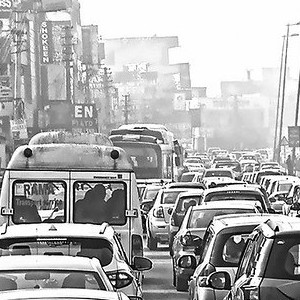Statement of purpose Caslys is committed to providing a safe and healthy workplace for all staff, as well as others who may enter our premises. Our COVID-19 Safety Plan outlines measures that we are taking to reduce the risk of COVID-19 transmission in our workplace. Development of the safety plan The policies and procedures outlined within the Caslys COVID-19 Safety Plan are based on guidance published by the Provincial Health Officer, the BC Centre for Disease Control and WorkSafeBC. Caslys will modify this plan and any procedures if they are not effective and working as necessary. Questions or concerns regarding compliance with our COVID-19 Safety Plan may be directed to the owners of Caslys via phone or email: Jason Shaw (jshaw@caslys.ca; 250-686-8801) or Luanne Richardson (lrichardson@caslys.ca; 250-884-6481). Protocol for reducing the risk of COVID-19 transmission We prohibit all our staff from reporting to work if they have COVID-19. They may return to work only if they meet one of the following conditions: Fever completely gone for at least three days AND improved respiratory symptoms (cough, difficulty breathing) AND at least five days have passed since the initial onset of symptoms. Fever completely gone AND improved respiratory symptoms (cough, difficulty breathing) AND negative results from the public authority’s COVID-19 testing protocol (to date = two negative tests 24 hours apart). If staff present illness symptoms, they may be excused from work without requiring a doctor’s note. Staff must report respiratory illness to Jason Shaw or Luanne Richardson and cannot return to work for at least 5 days following the onset of cough, fever, fatigue, sore throat, runny nose, difficulty breathing and/or shortness of breath. If a staff member is sick or has known close contact with someone who had COVID-19, they should work from home for a minimum of 5 days after exposure. Contact 8-1-1 if […]
Continue readingTag Archives: covid-19
Our response to COVID-19
Caslys is paying close attention to the evolving COVID-19 global situation and following the recommendations posted by federal and provincial health officials. We are committed to adapting our approach as new information becomes available. Hybrid work environment Our Caslys team is currently working under a hybrid work environment. Our office is open and most of our team work in the office part-time; and work part-time remotely. Each of our team members has full access from their home-office locations to our online data, email, and GoToMeeting screen sharing services, so we are able to fulfill all of our contractual obligations and project deliverables with no reduction to any of our services. COVID-19 safety plan Our COVID-19 Safety Plan (available here) outlines measures that we are taking to reduce the risk of COVID-19 transmission in our workplace. Contact us If you have any questions or concerns about our work-from-home policy or our COVID-19 Safety Plan, please feel free to contact either of our owners via phone or email: Luanne Richardson (lrichardson@caslys.ca; 250-884-6481) or Jason Shaw (jshaw@caslys.ca; 250-686-8801). Last updated: 2022-07-11
Continue readingCOVID-19 Isolation and Air Quality in Canada
There was a fair bit of press given to the impact that COVID-19 isolation or lockdown had on air quality in China and northern Italy – two places hard hit by this pandemic and also two places with particularly poor air quality due to industry, transportation and to some extent geography. As our Caslys team began working remotely from home, we wondered how air quality was being impacted here in Canada. So, we leveraged our earth observation skills and tools that we typically use to monitor the Earth’s surface and ventured into the atmosphere. We downloaded data from the Sentinel-5P Troposheric Monitoring Instrument to replicate what we saw in the news overseas. The focus was on nitrogen dioxide (NO2) that comes in large part from the combustion in our cars or the burning of fossil fuels for energy or industry. The Sentinel-5P satellite is able to map a variety of other parameters (listed in the website screen capture above), which may have applications for all sorts of air quality monitoring, but we focused solely on nitrogen dioxide to satisfy our curiosity. To avoid some of the seasonal variation, we plotted the average NO2 concentrations for the period when our local isolation began and the same seasonal range from one year earlier (March 2019 compared to March 2020). We also checked May 2020 to see if the lockdown is still influencing air quality. We looked into a couple of hotspots near Prince Albert, Saskatchewan and found that forest fires were the cause of lower air quality. We plotted the results over the National Geographic basemap service to see the hotspots and the generally improved air quality during isolation. In the images above, the highest concentrations of NO2 in the atmosphere are shown in purple – fading to orange and yellow. The […]
Continue reading